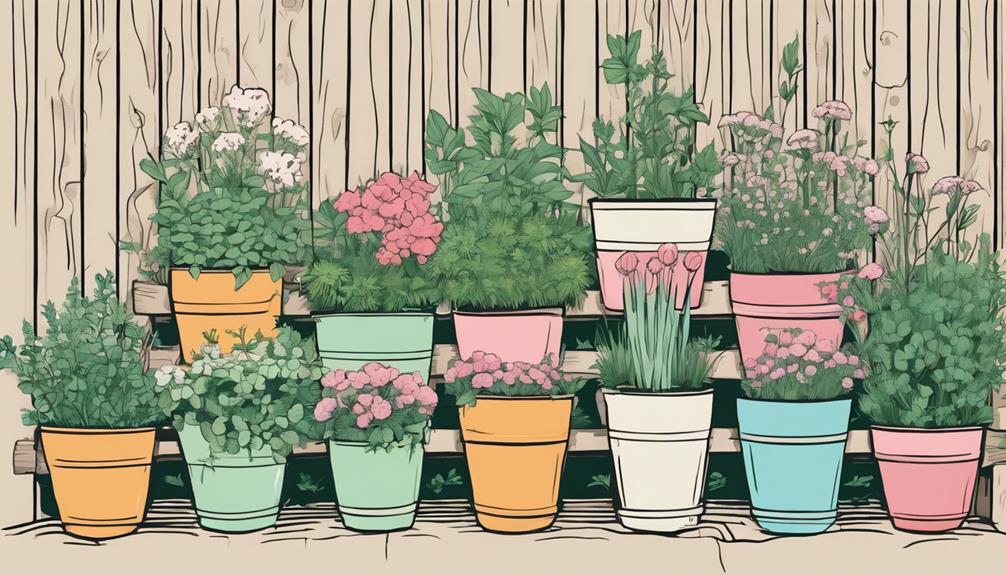See All: Backyard Farming
Free Backyard Farming Webinar…
You can grow food! This free webinar is for people who want the fastest and easiest ways to produce healthy and delicious vegetables, eggs, and meat. Because you know that growing your own food is like printing your own money…
Click Here To Watch The Free Webinar Now!
“I love gardening but live in a small townhouse with limited backyard space. I’ve heard about vertical gardening and thought it might be the perfect solution for maximizing my garden area. Can you provide me with a detailed guide on how to create a vertical garden in my backyard farm? I’m particularly interested in growing herbs and vegetables vertically and need advice on structures, plant choices, and maintenance strategies. Any tips on how to make the most of my small space would be greatly appreciated!”
Thanks, Laura, San Diego, USA.
How to Create a Vertical Garden in Your Backyard Farm
Hey Laura! Vertical gardening is a fantastic way to maximize your gardening space, especially in a small townhouse backyard like yours. It allows you to grow more plants in less space by taking advantage of vertical surfaces. Let’s go through the steps to turn your small backyard into a thriving vertical garden.
1. Understanding Vertical Gardening
Vertical gardening involves growing plants upward rather than outward, using structures like trellises, wall-mounted planters, or even repurposed materials. This method is perfect for small spaces because it optimizes the use of available area, making it possible to grow a variety of plants without needing a sprawling garden plot.
2. Selecting the Right Location
First, identify the best spot in your backyard for your vertical garden. Most herbs and vegetables need at least 6-8 hours of sunlight daily, so choose a sunny location. If your space has partial shade, there are still plenty of plants that can thrive there.
3. Choosing a Structure
For a successful vertical garden, you’ll need a sturdy structure to support your plants:
- Trellises: Ideal for climbing plants like tomatoes, cucumbers, and peas. They come in various materials like wood, metal, or plastic.
- Wall-mounted planters: Great for herbs and small flowers, these can be easily attached to walls, fences, or balcony railings.
- Freestanding A-Frames: These are versatile and can be moved around. Perfect for lightweight plants like lettuce or strawberries.
- Pallets: Wooden pallets can be repurposed into vertical garden structures. Just make sure to line them with landscaping fabric to hold soil and plants in place.
4. Selecting Plants for Vertical Gardening
Since you’re interested in growing herbs and vegetables, here are some great options:
- Herbs: Basil, thyme, mint, rosemary, oregano, and parsley are excellent choices. They’re relatively low-maintenance and grow well in containers.
- Vegetables: Think of climbing or compact varieties such as cherry tomatoes, peas, beans, lettuce, spinach, and kale.
Vertical gardening can also include fruits like strawberries or dwarf varieties of fruit trees if you have the space and support structures.
5. Preparing the Soil and Planting
Good soil is crucial for plant health. Use a high-quality potting mix that retains moisture while providing good drainage. For best results, mix in compost or a slow-release fertilizer to boost nutrient levels.
6. Watering and Maintenance
Consistent watering is key. Most vertical gardens need more frequent watering, as containers and vertical structures can dry out quickly. Consider installing a drip irrigation system to ensure your plants get the right amount of water. Regularly check for pests and diseases, and prune plants to encourage healthy growth.
7. Making the Most of Your Space
Here are a few tips for optimizing your vertical garden in a small backyard:
- Layering: Use tiered planters or stackable containers to create multiple layers of planting space.
- Rotating crops: Rotate your crops with the seasons to keep your garden producing year-round.
- Companion planting: Pair plants that benefit each other. For example, growing basil alongside tomatoes can improve both plants’ health.
- Decorative elements: Incorporate decorative elements like hanging baskets or artistic trellises to add visual appeal and utilize every bit of space.
8. Vertical Garden Features and Enhancements
To enhance your vertical garden, consider these ideas:
- Self-watering planters: These help in maintaining consistent moisture levels without daily watering.
- LED grow lights: If some areas lack sufficient sunlight, LED grow lights can supplement natural light and promote healthier growth.
- Hydroponic systems: Ideal for limited space, hydroponic systems can grow plants without soil, using nutrient-rich water solutions instead.
Laura, you can create a beautiful and productive vertical garden that suits your small backyard space. By choosing the right structures, plants, and maintenance strategies, you’ll be well on your way to a flourishing garden.
Final Thoughts…
Laura, creating a vertical garden is a smart and rewarding way to make the most of your limited space. From selecting the right location and structures to choosing suitable plants and ensuring proper care, each step plays a part in your garden’s success. Take your time to plan and enjoy the process. Thank you for reaching out with your question, and happy gardening!
Return To: Backyard Farming
Free Backyard Farming Webinar…
Marjory Wildcraft: For 20+ years, Marjory has been a leader in survival & preparedness and wants to show you how to grow food in your backyard farm. This free webinar is for people who want the fastest and easiest ways to produce healthy and delicious vegetables, eggs, and meat. Because you know that growing your own food is like printing your own money…

